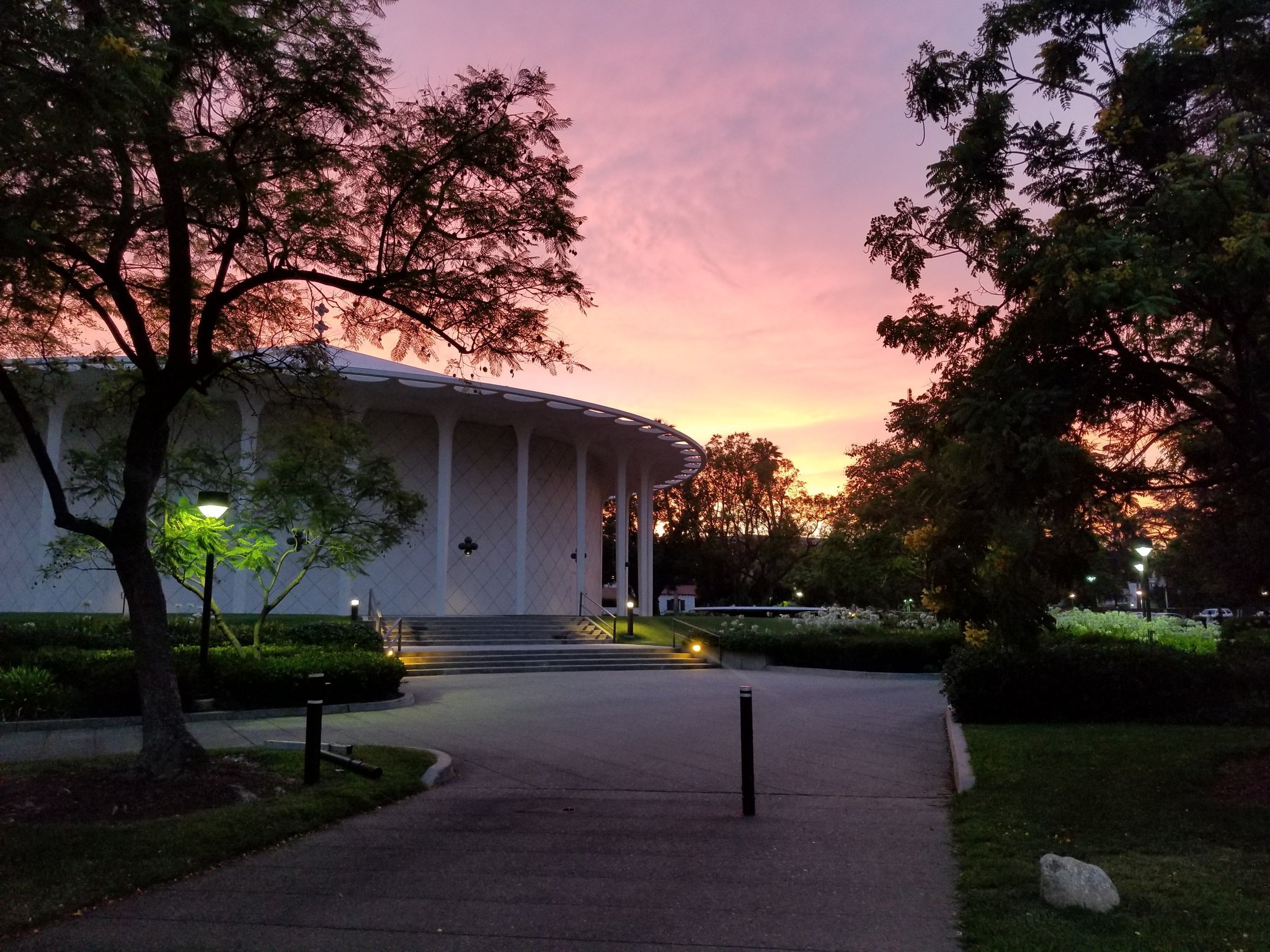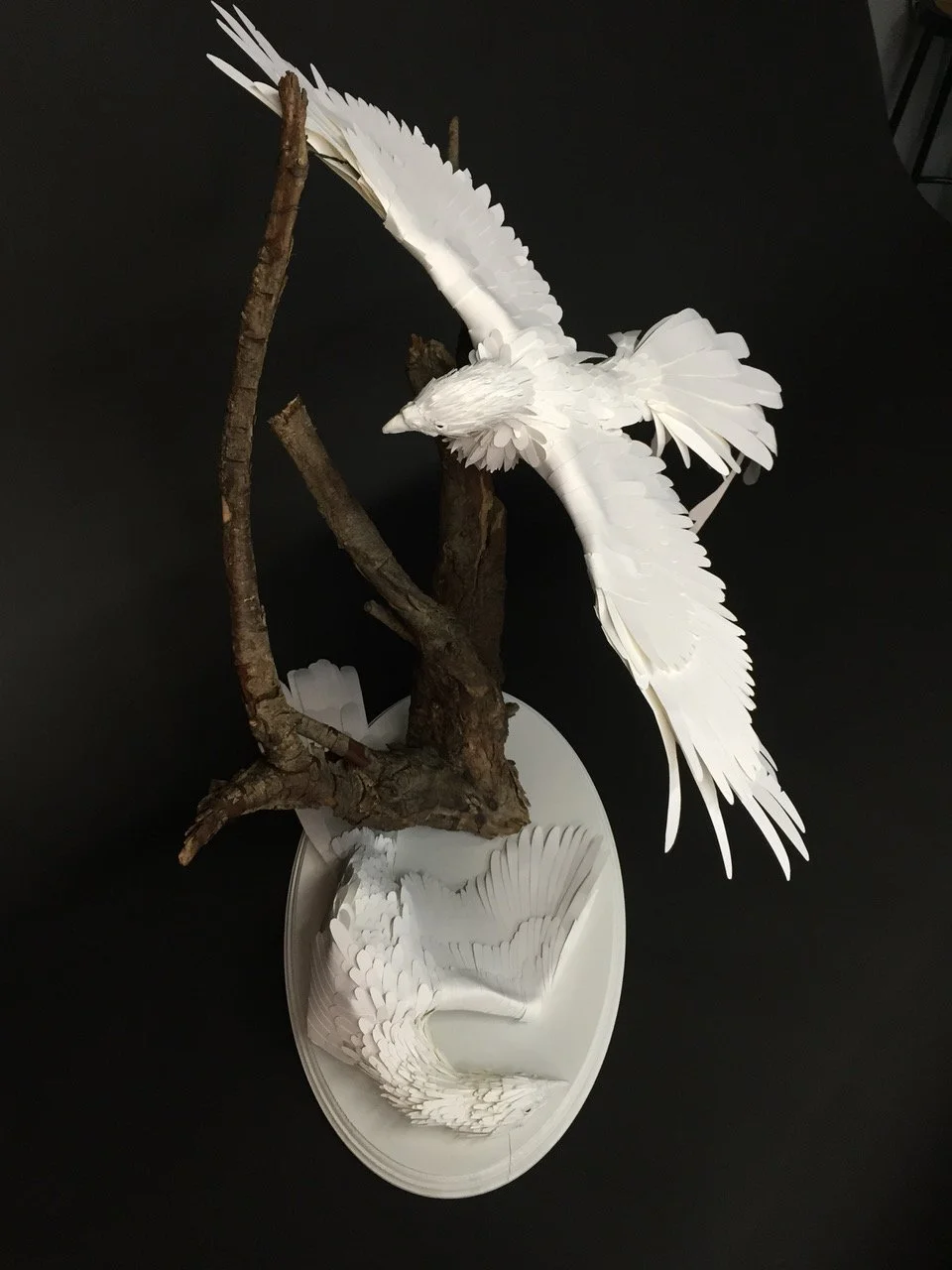Letters to the Editor, Fall 2021
Patrick Almhjell, a graduate student in biochemistry and molecular biophysics, tweeted this photo of sunset over Beckman Auditorium.
The Success of Failure
At the Thomas Edison Museum near his winter retreat in Ft. Myers, Florida, there is a plaque that quotes him: “I have not failed. I’ve just discovered 10,000 ways that won’t work.”—Van Snyder, JPL
Congratulations on the story about why failure is a good thing. It is probably the most important thing our faculty, leadership, students, and graduates need to understand.—Carver Mead (BS ’56, MS ’57, PhD ’60) Caltech’s Gordon and Betty Moore Professor of Applied Science, Emeritus
Insightful discussion of “failure” in the Summer 2021 issue. The word “failure” implies sub-optimal performance, or lack of correct action. But as your excellent article clarifies, “failure” is simply an intermediate and inevitable result in the process of posit, design, test, and evaluate. This process is necessary to make anything new, let alone achieve radical breakthroughs.
In my experience, many organizations undertaking a new project assume that the future is essentially knowable and try to limit the impact of unforeseen events by planning projects with periodic evaluation and adding a buffer of time to “fix things.”
More recent thinking in project management acknowledges that the future is not knowable, but rather the team moves forward in small chunks of time and adjusts plans continually as they go. Essentially, failure is prevented by frequently resetting the expectations of everyone, including the project’s sponsors.—Paul Snyder (EX ’80)
Thank you for your article on “The Transformative Power of Failure.” It makes me appreciate all the innovative work being done at Caltech and knowing some of the dedicated professors who truly are trying to make a difference. There are no overnight successes; one small success is generated from a million failures. We need to remember that in our everyday lives.—Marisu Jimenez
Learning from Our Own Failures
There is a glaring error on page 17 of the summer 2021 issue. In the middle of the page, in bold print with an arrow pointing to it is the startling statement that mass equals length: “Planet Nine would have a diameter 2 to 4 times the Earth’s mass.” If you pick the right units (albeit strange ones in many cases), virtually everything has a diameter that is 2 to 4 times the Earth’s mass, including the Earth’s diameter itself.—Keith Koenig (PhD ’78)
Editor’s note: And right at the beginning of our story about failure, too! You are right; what that statement should have said is, “Planet Nine would have a mass 5 to 10 times that of Earth.” We regret our error.
I received several positive responses from our alumni community [on “Behind the Vaccine: A Conversation with Satoshi Ohtake (BS ’00)”], many from new acquaintances, so thank you for providing me with the opportunity. I did note an error regarding my graduate degree; Washington should be Wisconsin.—Satoshi Ohtake (BS ’00)
Editor’s note: Satoshi Ohtake graduated from the University of Wisconsin in 2005. We regret the error, and have corrected it in both the online version of the story, and in the archived PDF of the issue.
An Invigorating Issue
Let’s not mince words: this Caltech magazine is fun to read, and stimulating.—Tom Smith (BS ’61)
My daughter graduated from Caltech and I was reading the articles in your Summer 2021 issue. I teach Honors and AP chemistry, and would like to use “If at First... The Transformative Power of Failure” during my beginning days of class. Last year our school was remote through about January. Many students never came back; one AP chemistry class had two in-person students out of about 30! So, instead of jumping into facts, I would like to explore science, and to use this article to set the stage for the year. I am also Science Olympiad head coach and would like to share that article with our team.
There is a passage in “Biology Through the Eyes of a Physicist” that talks about a cell not caring if you were a biology, chemistry, or physics major—it uses all of those! “Sustainability Solutions” can be used to kick off our electrochemistry unit. “Behind the Vaccine” could be used for gaining a fundamental understanding of science and then move on and adapt. So many uses for many of the articles!—Margaret Stokes-Chinetti
Specimen: Phoenix. Paper, wire, paint, polymer clay, natural wood. Isel L. Pollock - 2017z
In Flight
I was a postdoc with [the late biologist] Seymour Benzer and enjoy keeping up with what’s happening at Caltech. The July issue of the magazine struck me. A few years ago, my daughter made a paper sculpture of two birds (at right). I guess that I just wanted to share.—John A. Pollock (Postdoc ’84-’89)


